Have you ever wondered what it takes to navigate the icy roads of Montana during the chill of winter? Our Montana Winter Driving Guide is here to steer you through the snow-dusted mountains and frosty valleys with confidence.
We’ll share essential tips to ensure your winter driving experience in Montana is as smooth as the glacial rivers that carve through the state’s rugged terrain.
I’ll draw from my own travels across the Big Sky Country during the frosty months to give you a firsthand account of what to expect and how to prepare.
Why should you pay attention to these tips? Because they could be the difference between a memorable trip and one you’d rather forget.
- Related article: Snowy Montana Winters
Let’s dive into a journey that promises not only safety but also the chance to fully embrace the serene beauty of Montana in winter. Discover how you can conquer the roads and make the most of your winter travels in this majestic state.
7 Key Takeaways on Montana Winter Driving
- Preparing your vehicle is crucial for Montana winter travel, including checking road conditions, using snow tires, and ensuring all lights and wipers are in top shape.
- Navigating winter roads in Montana requires a slower pace, longer stopping distances, and caution around snow plows.
- Avoid risky driving behaviors like texting, speeding, and driving under the influence.
- Always check real-time weather and road reports for the latest conditions, especially for black ice and shaded areas.
- Essential safety equipment for your winter car includes booster cables, blankets, a snow shovel, and a first-aid kit.
- Winter survival tips include letting your vehicle warm up, reducing speed and increasing distance, and avoiding driving while fatigued.
- By embracing these tips, you can turn your Montana winter expedition into a secure and memorable adventure.
Road Safety Tips for Visiting Montana in Winter
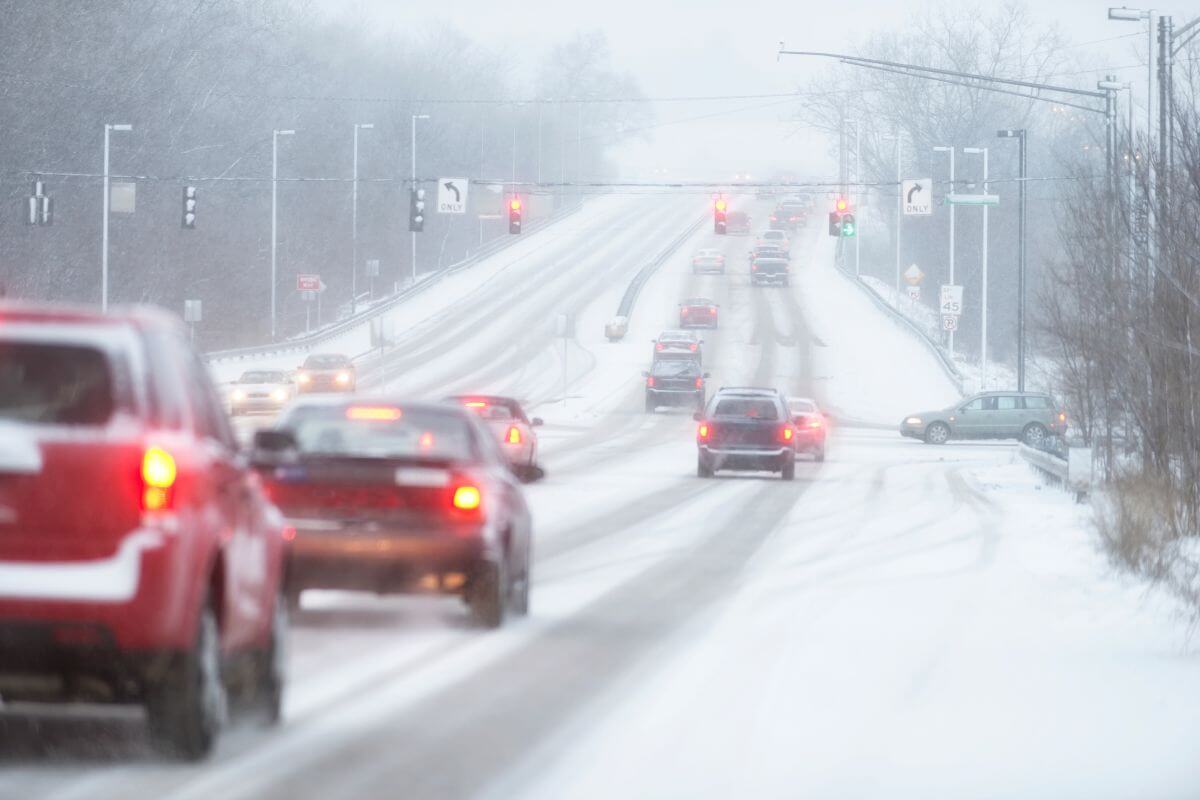
Montana’s winter scenery is truly breathtaking, yet it’s essential to be well-prepared for your journey on the roads.
Whether encountering icy stretches or unexpected snowstorms, here are practical suggestions to guarantee that your winter drive in Montana is both secure and pleasurable.
1. Prepare Your Vehicle
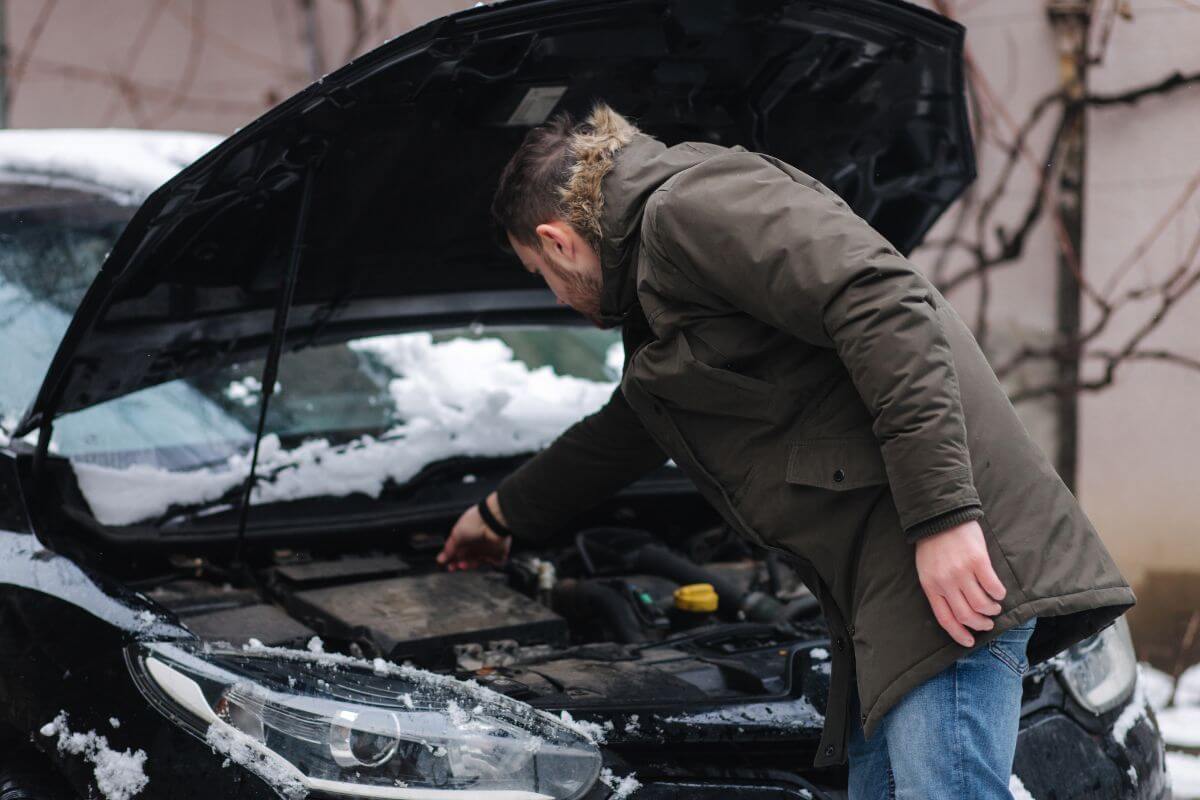
When traveling in Montana during winter, it’s crucial to prepare your vehicle for the challenging snowy conditions.
- First and foremost, check the Montana Department of Transportation website for road conditions before you set out.
- Ensure your vehicle is equipped with snow tires and anti-lock brakes, as they are preferred for driving on snow or ice.
- Before hitting the road, clear all windows of snow or ice and unfreeze any frozen door locks.
- Turn off cruise control when driving on slippery roads, as it can make wheels spin.
- Know your destination and carry a map with you.
- If you are driving a four-wheel drive vehicle, check that all four tires are in good condition, along with your headlights, brake lights, turn signals, and interior lights.
- Verify the condition of your ignition system, fuel system, belts, fluid levels, brakes, exhaust system, wiper blades, tire tread and pressure, defroster, proper grade oil, cooling system, battery, and lights.
- Fill the gasoline tank before a long trip and keep it as full as possible to minimize condensation.
- Stock your car with basic winter driving equipment: scraper and brush, small shovel, jumper cables, tow chain, and a bag of sand or cat litter for tire traction.
- Include road flares, a blanket, heavy boots, warm clothing, a flashlight with batteries, and a cellular phone.
- Keep your gas tank close to full.
- Install winter tires with adequate tread.
- Ensure your defrosters and windshield wipers are in working order.
With these precautions, you can drive safely and confidently in Montana during the winter.
2. Take It Slow
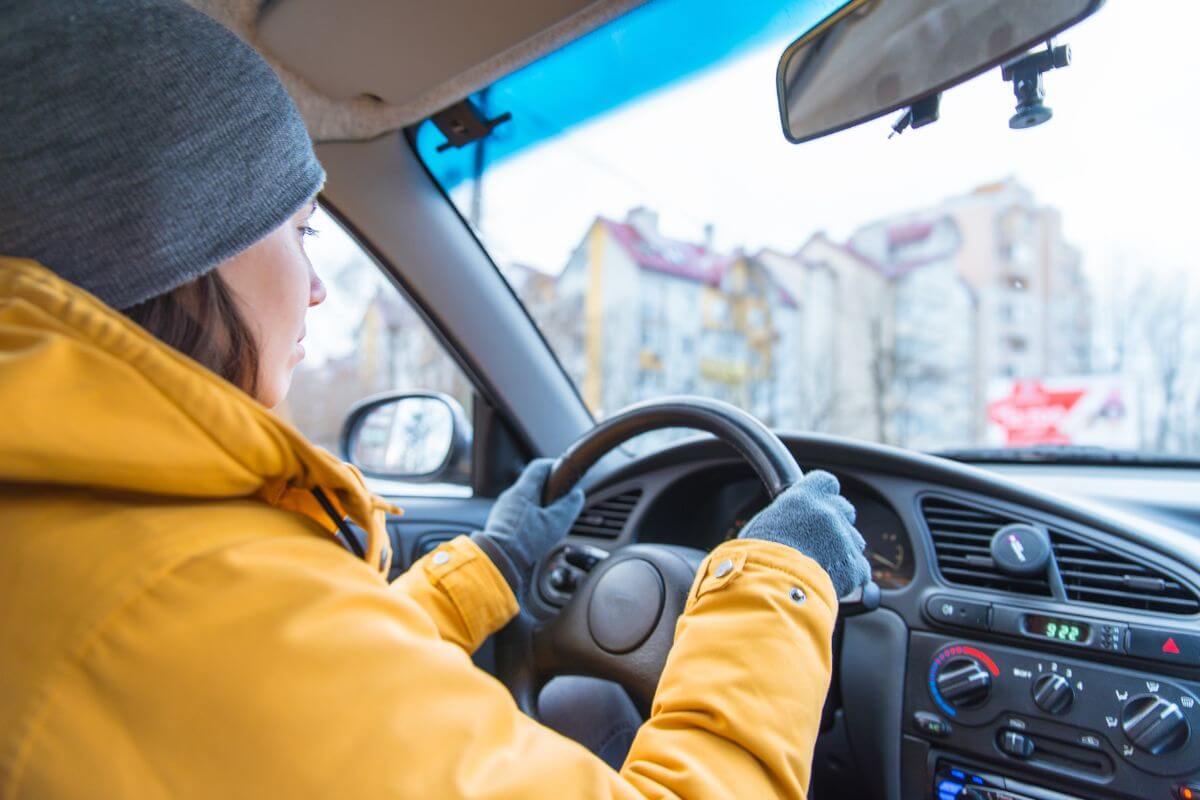
Montana’s winter wonderland is a sight to behold, but it’s crucial to adapt your driving style to the season. Here’s why taking things slow is more than just a suggestion:
- Engine Warm-up – Before you hit the road, give your engine a minute or two to warm up, especially in frigid temperatures.
- Reduced Stopping Time – Wet, snowy, or icy roads demand a slower pace. Stopping distances can be up to ten times longer, and sudden braking can send you into a spin. Give yourself the gift of extra reaction time.
- Extra Time for Travel – Montana’s vastness demands patience. Allow ample time to reach your destination. Not only will you avoid the stress of rushing, but you’ll also be promoting safer driving conditions.
- Plow Etiquette – If you’re sharing the road with a snow plow, give it some space. These vehicles move at a snail’s pace, make wide turns, and stop frequently. Stay back and pass with caution if necessary.
- Safe Parking – When you’re ready to call it a day, choose well-lit areas to park. Not only will it deter any Grinch-like characters, but it also allows for better visibility when you start your journey again.
By taking it easy, you’re reducing the risk of accidents and ensuring a safer journey for everyone on the road.
3. Avoid Risky Driving Behaviors

I cannot stress enough the importance of avoiding risky driving behaviors. Texting while driving, exceeding speed limits, and driving under the influence of alcohol or drugs are all definite no-nos when driving during winter.
Not only do these behaviors put you at risk, but they also endanger the lives of others on the road. Always, always wear your seat belt. It’s a simple step that can make a world of difference in the event of an accident.
And don’t forget to lock your car doors, even while driving. It may seem like a small precaution, but it can prevent potential carjackings or other safety risks.
Another risky behavior to avoid is driving while fatigued. This is especially important when driving in wet or slippery conditions, such as on icy roads.
Fatigue can dull your senses and reaction times, making it even more dangerous to navigate tricky road conditions.
Remember, the goal is to arrive at your destination safely. Taking these precautions and avoiding risky driving behaviors can help ensure that you do just that. Safe travels!
4. Check Weather and Road Reports

It’s crucial to be aware of weather and road reports, especially during the winter months. Knowing the current road conditions and avoiding dangerous routes can make all the difference in arriving safely at your destination.
When driving in winter weather, it’s essential to slow down and increase your following distance to reduce the risk of accidents.
Use caution when approaching bridges, as they tend to freeze faster than normal roadways. Shaded areas of roadways may also be covered in ice, so keep your wheels straight when driving through these sections.
Watch out for black ice, which can be particularly treacherous. If the pavement appears dark and glossy, black ice is likely present.
These dangerous patches often form on shaded or tree-covered parts of the roadway, as well as on bridges and overpasses. In the event of severe weather, it’s best to avoid travel unless necessary.
If you find yourself trapped in your car during a blizzard, pull off the highway, turn on your hazard lights, and hang a distress flag from your radio antenna or window.
Planning and being cautious can help ensure a safe and smooth journey during winter weather conditions.
5. Bring Safety Equipment
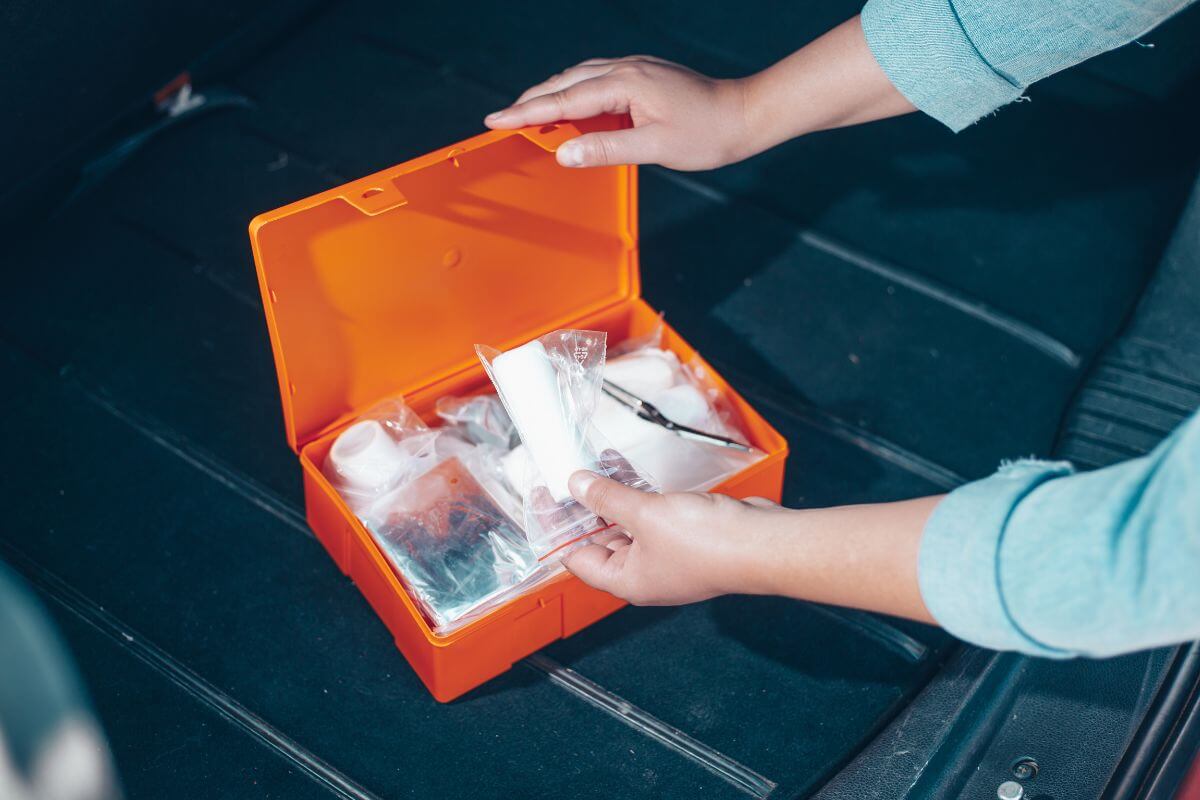
Don’t leave home without these winter car supplies. Trust me, you’ll be glad you packed them.
- Booster Cables – For those unexpected battery mishaps.
- Extra Water – Always keep yourself hydrated during your trip.
- Two or More Blankets – Stay warm if you’re stuck for a while.
- Snow Shovel and Scraper – Essential for clearing a load of snow and ice.
- Flashlight and Extra Batteries – Shed light on any situation.
- Extra Clothing – Cap, mittens, parka, and boots: In case you have to walk for help.
- High-Calorie, Non-perishable Food – Keep your energy up with candy or canned nuts.
- Sand or Strips of Carpet – For added traction on slippery surfaces.
- Extra Windshield Washer Fluid and Antifreeze – Ensure clear visibility at all times.
- Flares or Reflectors – Make your car visible in low-visibility conditions.
- First-Aid Kit – A traveler’s must-have, including any necessary medications.
- Spare Tire and Jack – Regularly maintained, of course.
- Cell Phone Charger – Keep your phone lifeline up.
- Piece of Bright Cloth – Signal for help if needed.
I can’t stress enough how vital it is to have these winter car supplies, including an extra set of Montana winter apparel. They could make all the difference in an emergency. Before you hit the road, do a quick inventory and ensure everything is in place. Stay safe out there!
Montana Winter Driving Guide Final Thoughts
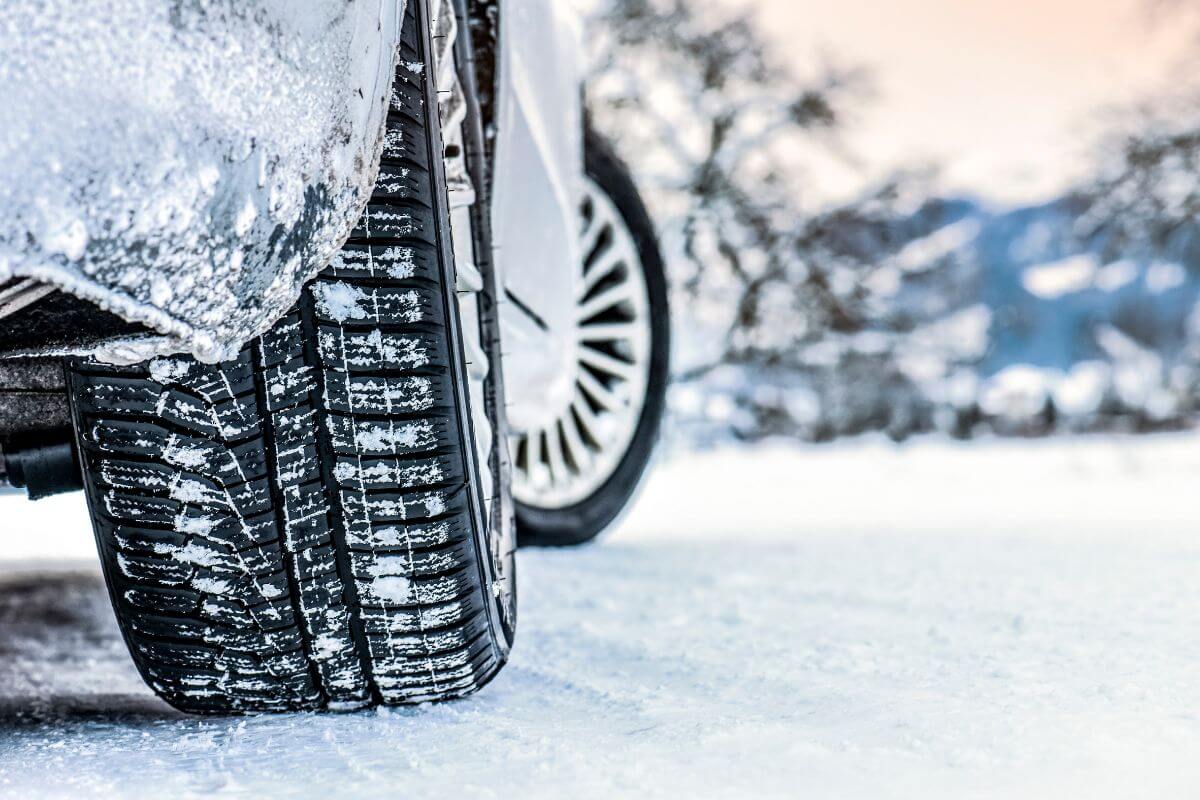
In navigating Montana’s winter roads, preparation is of paramount importance. The checklist for preparing your vehicle is central to this preparation, encompassing the selection of appropriate tires, the maintenance of essential components, and the packing of a comprehensive winter survival kit.
Taking things slow emerges as a recurrent theme, advocating for practices like allowing the vehicle to warm up, reducing speed, and maintaining extra space between vehicles — contributing to a safer journey.
Avoiding risky behaviors, such as distracted or fatigued driving, is emphasized to ensure constant vigilance in the challenging winter conditions of Montana.
Regularly checking weather and road reports becomes a vital habit, with specific attention to bridges, shaded areas, and the potential presence of black ice.
The significance of bringing safety equipment, ranging from a well-equipped winter survival kit to essentials like jumper cables and a fully charged phone, cannot be overstated.
Essentially, the combination of preparedness, a cautious driving approach, risk avoidance, weather awareness, and essential safety gear transforms a Montana winter adventure into a resilient and secure expedition.
Encouraging travelers to stay informed, drive with care, and responsibly embrace the beauty of Montana’s winter landscapes is key to ensuring safe travels through this breathtaking terrain.
Montana Winter Driving Guide FAQs
1. Do You Need Snow Tires in Montana?
Road conditions in Montana vary widely, and the necessity for snow tires depends on the vehicle type.
While heavy-duty vehicles often come with tires suitable for snow and ice, other vehicles may benefit from specialized snow tires to navigate the diverse winter conditions across the state.
2. What Does Montana Use on Winter Roads?
Magnesium and sodium chlorides, extracted primarily from the Great Salt Lake, are used to prevent road surfaces from becoming slick, improving safety and reducing accidents.
Magnesium chloride, a salt compound with added corrosion inhibitors, is specifically employed to prevent or remove ice and snow buildup on roads.
3. Is It Hard to Drive in Montana in Winter?
Driving in Montana during winter can be challenging due to snow and icy conditions, especially in more remote or mountainous areas.
However, well-maintained roads, proper winter driving precautions, and suitable equipment, such as snow tires, can significantly ease the challenges and ensure a safer driving experience.
4. Is It Illegal to Drive With Snow on Your Car in Montana?
Montana’s law doesn’t directly address snowy cars, but there is a state law concerning impaired visibility and hazardous driving.
If snow and ice on a windshield obstruct a driver’s vision, an officer may issue a $10 to $100 ticket.
5. Can You Drive a Side by Side on the Road in Montana?
Driving an ATV or UTV on Montana public roads is allowed if your vehicle is road-legal, which involves outfitting it with a rear-view mirror, horn, headlight, and brake lights.
Discover more about Montana in these related articles:
- https://www.mtech.edu/env-health-safety/safetymanual/docs/safe_man_travel.pdf
- https://www.montana.edu/extension/judithbasin/community/black_ice_safety.pdf
- https://www.montana.edu/emergency/emergency_actions/winter-weather.html
- https://www.nhtsa.gov/winter-driving-tips
- https://www.mtsac.edu/risk/documents/2021_12_14_SafetyTipsWetWeatherDriving.pdf

